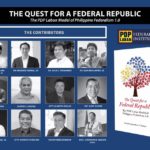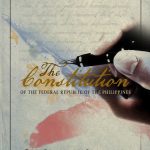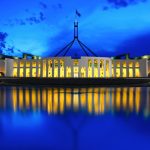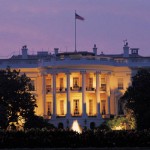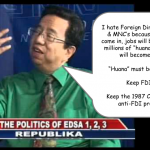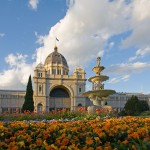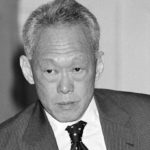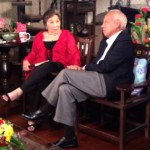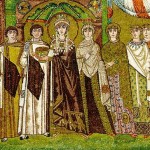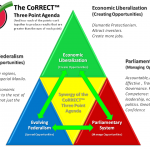Federalism in Africa: The Case of Ethiopia – Challenges & Prospects
(Lecture given by Dr. Negasso Gidada, Former President of the FDRE, for a group from University of Maryland as part of UMD Study Abroad- Ethiopia 2015: University of Maryland Program in Ethiopia: The Policy and Politics of Economic Development in Africa)
One of the questions which comes to the minds of those who are interested to know about Ethiopian politics would be: “Why Is Federalism Adopted for Ethiopian State System?”
There are three main reasons why Federalism was adopted in 1991 as proper state system for Ethiopia. These are:
a) It is thought to be the best way to correct the past administrative injustice
b) It is to hinder instability in Ethiopia, the Horn of Africa and the Red Sea and the north eastern part of the Indian Ocean
c) It is thought that it is the smoothen the living together of the more than 80 ethnic groups together and save Ethiopia from disintegration.
It would be difficult to understand why these reasons were important for Ethiopia if one does not understand the background of what was going on in Ethiopia prior to and during 1991. I will therefore, first give a short explanation on the background.
The situation in Ethiopia before 1991 was that harsh social injustices, economic exploitation and political oppression prevailed. There was linguistic, cultural and religious discrimination. As result, there were dissatisfactions and revolts in different parts of Ethiopia. These dissatisfactions and revolts developed into organized armed movements. By 1991 there were several organizations which fought against the Ethiopian government seeking for self-determination and independence for their regions. These liberation movements had large areas under their control. These included the Eritrean Liberation Front (ELF) and Eritrean People’s Liberation Front (EPLF) in Eritrea; Tigray People’s Liberation Front (TPLF) in Tigray; Afar Liberation Front (ALF) in Afar; Ethiopian People’s Democratic Movement EPDM (Latter changed itself to the Amhara People’s Democratic Movement (APDM) in Amhara; Oromo Liberation Front (OLF), Islamic Front for the Liberation of Oromia (IFLO), and Oromo People’s Democratic (OPDO) in Oromia ; Gambella People’s Liberation Front (GPLF) in Gambella; Benishangul People’s Liberation Front (BPLF) in Benishangul; Sidama Liberation Front (SLF) in South Ethiopia and Western Somali Liberation Front and Ogaden National Liberation Front (ONLF) in Ethiopian Somali. There were other small organizations in Afar, Benishangul, Gambella and Oromia also.
Besides, the war in the Sudan was going on and Somalia was not stable. Thus the instability of the Horn of Africa was danger to the north eastern part of the Indian Ocean and the Red Sea which could pause danger to the international trade and peace. The Ethiopian Peoples’ Revolutionary Democratic Front (EPRDF), a front of four Organizations, namely the TPLF, EPDM, and OPDO (a fourth one joined the front latter) defeated the army of the military Regime whose head was Colonel Mangistu Haile Mariam and took control of the government in May 1991. But this did not mean that peace would come to Ethiopia and stability of the Horn of Africa be guaranteed.
With the aim to end the war and to find peaceful solution for the problems of Ethiopia the EPRDF convened the Peace Conference of July 1991 on which all existing opposition organization, armed or not armed, participated except the Workers Party of Ethiopia (WPE, established by the military government), the Ethiopian People’s Revolutionary Party (EPRP) and the All Ethiopian Socialist Movement (AESM). These were deliberately barred from attending. The EPLF which could already took control of the whole of Eritrea in May 1991 and has established a provisional government attended the conference as guest observer. The holding of the conference was in accordance with the agreement at the London Conference which was facilitated by the governments of the U.S.A. and G.B. and was attended by the representatives of the EPLF, the TPLF and the Military Government of Ethiopia.
The July Peace Conference deliberated and decided on several important issues. The following were the main resolutions of the conference: a) adoption of a Transitional Charter, b) Establishment of a Transitional Government on the bases of the Transitional Charter, c) The Charter provided that the Right to Self-Determination of the different Nations, Nationalities in Ethiopia including g and up establishing independent states of their own is guaranteed d) a referendum to ask the Eritrean people if they want independence or want to remain n united with Ethiopia e) the Ethiopian state should be decentralized and power should devolve, and for this the state should be restructured into new administrative regions depicting the ethnic territories f) guarantee for the respect of human and democratic rights g) guarantee for equitable resource sharing h) guarantee that the languages and cultures of the different ethnic groups are respected and I) that the transitional government establishes a Constitution Drafting Commission to draft a constitution which should be adopted as quickly as possible and that a provides for the establishment of a democratic and united Ethiopia but which respects the right to self-determination.
Soon after the Conference, the Transitional Government of Ethiopia (TGE) was established on August 15th, 1991. The government established a House of Peoples’ Representatives in which most of the representatives of the organizations which participated on the July Peace Conference were delegated. The Chairman of the TPLF, Meles Zenawi became the speaker of the House and Head of State while Tamrat Layne, Chairman of EPDM became the Prime Minister. A Council of Ministers was established under the leadership of the Prime Minister. The EPRDF army became the National Defense Force, headed by Seeye Abraha of the TPLF, the chief of the EPRDF army. The achievements of the TGE were:
1) carrying out of election to establish the new regional administrations
2) see to it that the Eritrean referendum takes place and Eritrea becomes independent
3) the establishment of the Constitution Drafting Commission, carry out election for the Constituent Assembly and adoption of the Constitution of the Federal Democratic Republic of Ethiopia in end of 1994.
4) Carry out election for the establishment of the Federal Democratic Republic of Ethiopia in August 1995 in accordance with the new constitution.
The making of the constitution went through several steps. The first step was the establishment of the Drafting Commission in August 1992. This was accomplished by first inviting political organizations (there were more than 100 organizations which were not members of the HOR which were born after May 1991) outside of the HOR through print and electronic Media to register at the HOR if they are interested to be members of the Drafting Commission. Seven legally registered political organizations were chosen by the HOR from the many organizations which applied for membership. ((South Ethiopian Democratic Front (SEDF); Ethiopian National Unity Party (ENUP); Forum 84 organization (Forum 84); Ethiopian Muslims Movement (EMM); South Ethiopian Peoples’ Coalition (SEPC); and Ethiopian Democratic Movement League (EDML)). The same procedure was followed concerning professional associations and 15 such organizations were chosen by the HOR. These were Ethiopian Workers Association (3), Ethiopian Teachers Association (2), Ethiopian Chamber of Commerce (3), Ethiopian Legal Professionals Association (2), Ethiopian Health Professionals Association (2), and from different Women’s Associations (3). Another seven representatives of political organizations in the HOR were added. These included the Ethiopian Democratic Union (EDU, an organization of the old aristocrats and royalists who were in resistance during Mengistu’s reign), Harari National League, the Ethiopian Peoples’ Democratic Movement (EPDM), Kafa National Democratic Organization, Ethiopian National Democratic Organization (ENDO), Oromo People’s Democratic Organization (OPDO) and Isa /Gurgura Liberation Front. Only Ato Dawit Yohannes from EPDM and I from OPDO represented the EPRDF. The OLF and other Oromo organizations had withdrawn from the Transition before the establishment of the Commission and was at war with TGE. The palace of the son of Emperor Haile Selassie, Prince Makonen, was made the center of the Commission. The assembly hall and the offices of the secretariat of the Commission were in the building (adjacent to the Embassy of the U.S.A.
The Commission elected Ato Kifle Wodajo (a Liberal and longtime official in the Ministry of Foreign Affairs under the military regime) of ENDO as chairman and Ato Dawit Yohannes (a Revolutionary Democrat and long time in exile in the U.S.A.). The Commission decided on the procedure of preparing the Draft Constitution. Members agreed that concepts of constitution on which members unanimously agreed upon should be forwarded for public discussion and approval. But issues on which there was disagreement among members should be left for the decision of the public. Consequently, a document containing seven chapters with neutrally formulated (non-partisan) basic concepts of a constitution. Forms (ballot forms) were also prepared on the basic concepts (73 basic constitutional concepts with diverse constitutional attitudes and alternative constitutional concepts) for the public, political organizations, professional associations, mass organizations, education institutions to collect different stands of the society on basic constitutional issues. Then documents were prepared in different Ethiopian languages and deliberations forums for local residents were organized in then 23,320 Kabales, the lowest administrative units (now more, 45,000?) and for workers in different institutions, for women, elders, religious leaders, and different political organizations. Special forums were organized for the Ethiopians residing abroad and their views and stands were collected. Local discussions took three days and four to seven hours a day. According to the Commission’s report on the procedure of the constitution making it is said “seen in general, the number of the public (participants) was few the first day, became more on the following meetings and had the tendency of decreasing on the last day.” One can also imagine that members and supporters of WPE, EPRP, AESM, and OLF boycotted the meetings and their number may be very high.
The main reason why Federalism was adopted was to create an administrative system in which self-determination, short of secession, of the ethnic groups would be practiced. Thus, among the 73 constitutional concepts forwarded to the public two were concerning the right to self-determination, up to and including secession (point number 39 and Federalism 46.) On the concept of self-determination only the participants of the discussion in Tigray, Afar, Oromia, Dire Dawa and Harari supported the right to unconditional self-determination by more than 90%. In Amhara Benishangul and Ethiopian Somali the point was supported by 72% to 89%. Addis Ababa supported it by 67% and Gambella by only 59%. 72% to 97% of the participants in Afar (97%), Harari (72%), Oromia (95%), Tigray (92%) and Amhara (92%) were or Federal System. 84% in Gambella, 65% in Ethiopian Somali and 60% supported the idea. Whatever the case, the majority of those who participated on the deliberation were for the Federalism but at the same time for unconditional self-determination. It would have been interesting to present the final draft for referendum to see what the people would have said on these articles of the constitution or would be more interesting to see through referendum today, after 20 years, what the verdict of citizens could be.
The results of the discussions were collected and were formulated into constitutional articles by experts stationed at the office of the Commission. In the meantime constitutional experts from abroad were invited from abroad to hold lectures on the question of self-determination, on federalism and experiences of other countries on these issues. The experts at the office presented their work to the meeting of the Commission for debate. Heated debate took place between members with different positions. Votes were given on each article and almost all articles passed through majority votes. Only on few articles there were no compromises and minority positions were not discarded. In such cases two opposed stands or positions were formulated and put into the draft constitution to be presented to the House of Representatives. Examples were articles 39 (on the right to self-determination) and article 40 (right to property). The final draft with 72 articles was presented to the HOR at the end of March 1994. A Constituent Assembly included 545 (These were representatives who were elected from the then existing Woredas (=districts). There are 547 of them today). The election took place in May 1994 and the assembly met for six weeks from the end of November to the 8th of December 1994. As for regional representation, 37 Harari, 23 from Addis Ababa and 2 from Dire Dawa. The finally approved Constitution had 106 articles. Concerning the voting on the two articles which contained minority and majority positions in the drafts of the drafting Commission and the HOR, there were 515 members present when article 39 was debated upon. 508 voted for while 5 were against and 2 abstained. On article 40, only 3 abstained, 0 were against and 496 supported it. When it came to Federalism, 507 were presented when it was deliberated upon. 500 were for Federal structure, 5 were against and 2 abstained. Interestingly 24 of the present were against having Independent Judiciary, 494 were for it while 9 abstained. Any way after the Constitution was approved by the Constituent Assembly preparations were underway for establishing the Federal Democratic Republic in accordance with the Constitution. Election for the new two chambered parliament, House of Peoples’ Representatives and the House of Federation took place in May 1995 and the Houses met in August 1995, endorsed the approved Constitution as the supreme law of the country, and established the new government and elected the President who signed on the law the same day.
Federalism in Ethiopia was introduced by the Constitution based on the principles of self- determination, shared rule and self of peoples of Ethiopia. It is actually the peoples who formed the federation as it says in the Preamble “We, the nations, nationalities and peoples of Ethiopia…Have therefore ratified, on 8 December 1994 this constitution…” According to the Constitution “All sovereign power resides in the nations, nationalities, and peoples of Ethiopia” (art. 8/1). Rights of the Ethiopian Nations, Nationalities and Peoples are listed in Article 39 and read as follows: “1. Every Nation, Nationalities, and People in Ethiopia has an unconditional right to self-determination, including the right to secession. 2. Every nation, nationality and people in Ethiopia has the right to speak, to write and to develop its own language; to express and to promote its culture; and to preserve its history. 3. Every nation, nationality and people in Ethiopia has the right to a full means of self-government which includes the right to establish institutions of government in the territory that it inhabits and equitable representation in the regional and national government.
Article 47 determined the member states of the Federal Democratic Republic of Ethiopia, and these are 1. Tigray; 2. Afar; 3. Amhara; 4. Oromia; 5. Somali; 6. Benishangul/Gumuz; 7. Southern Nations, Nationalities and Peoples; 8. Gambela Peoples; 9. Harari. In addition two city states, Addis Ababa and Dire Dawa were latter formed. They have full measures of self-government but their administrations shall be responsible to the Federal Government, although the residents shall be represented in the Council of Peoples’ Representatives (Article 49/2-3). According to article 47/2 Nations, Nationalities and Peoples within the states listed above have the right to establish, at any time, their own States. Article 47/4 states that member States of the Federal Democratic Republic of Ethiopia have equal powers. The Federal State and the States shall have legislative, executive and judicial powers (50/2). The State Council has the power of legislation on matters falling under State jurisdiction and thus may draft, ratify and amend a state constitution (50/5). Federal and State powers are defined by the Constitution. States shall respect the powers of the Federal State (50/8). Each nation, nationality and people is represented in the House of Federation by at least one member. Each nation or nationality shall be represented by one additional representative for each one million of its population (Article 61/2). The House of Federation, among other things, has the power to interpret the Constitution (62/1) and shall determine the division of revenues derived from joint Federal and State tax sources and subsidies that the Federal Government may provide to the States (62/7). The States collect tax in their jurisdiction and use it for their own administration and development. Through this revenue system, the Federal Government has been extending roads connecting the States with the Federal capital, States and States, Zones within the States and big irrigation dams. Electric power and telecommunication is also being extend by the Federal Government which is also helping the States with capacity building to construct small roads (connecting districts with their zones and administrative capitals), small irrigation dams, and social infrastructures. Administrative structures are decentralized and devaluated. Communes and districts have their councils and decide on their own social and economic activities and security. (Militia working with district and regional police). Thus, one can say that the Ethiopian Federal System has, in general, Ethiopia has not disintegrated as many feared when the idea of Self-determination and Federalism was introduced. There is no major armed conflict going on.
As challenges to Ethiopian Federalism some points can be mentioned. The first one is the question of representation and participation of the nations, nationalities and peoples in the House of Peoples Representatives, the House of Federation, the States Councils and District Councils. It seems that the Constitution is not fully respected in this case. The second challenge is that fair resource distribution is not yet in place. Ideological disagreements such as the question as to which rights, individual or group, should have priority. Should land be collectively be owned ort individually? Whether we should continue to have federal system or go back to the old central system is still matter of controversy. There is also argument against ethnic and linguistic based federalism. There are many who are opposed to the present language policy. Interethnic conflicts erupt often caused by disputes on land, water, grass and on settlements by mass of people from one State inn another. Expansion of Addis Ababa to the surrounding districts of Oromia was cause to grave clashes between Oromo (students, farmers and residents of towns) and the Police two years ago has subsided for the time being but permanent solution to the problem has not yet been found. Expansion of modern agricultural projects, industry, infrastructures and cities are sometimes causes contention. Historical grudges have not yet completely died out and manifest themselves through some the conflict mentioned above. The non-development of democracy and multiparty system contribute much in aggravating problems.
Yet one can confidently say that the perspective for Federalism is good. Ethiopia will remain Federal and united, Majority of the citizens like it. Secessionist movements are dying out and federalist parties are growing stronger. Armed movements are found here and there but will not be able to mobilize for their causes. But there are conditions which would influence the sustainability of the federal system. Economic and social development must be intensified coupled with fair and equitable distribution of resources. If not dissatisfactions will culminate in revolts against the government which would affect the willingness of the different nations, nationalities to harmoniously live together. Human and Democratic Rights must be respected.
Whatever the case, as a concluding remark, I would like to state that we Ethiopians need to sit down and think about our Constitution which provides articles which have remained controversial from the first day of its making, including about Federalism. It is however clear that it would be naïve to expect that 100% of citizens would conform to the Constitution. However, we should find a way which allows that the majority of the Ethiopian people are in consensus with the Constitution. The best possible way for this, I believe is first of all to have a meaningful discussion on the controversial issues of the Constitution. The discussion should lead to a forum of creating a forum for formulating possible amendment of some of the controversial articles. The draft amended articles should be incorporated in the Constitution as a whole. The whole Constitution should then be forwarded to the citizens in a referendum. This would give all Ethiopian citizens at home and abroad to once decide if they accept the Constitution or not. They did not have such a chance up to now. I know that Constitutions of countries of this world were not approved by the citizens through referendums. But the recent experiences of Scotland and Catalonia should tell us that it would be better that holding referendums would be fair, democratic and modern and would give better legitimacy to the Constitution.

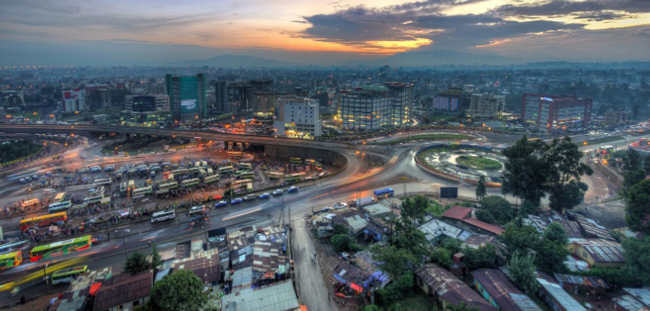
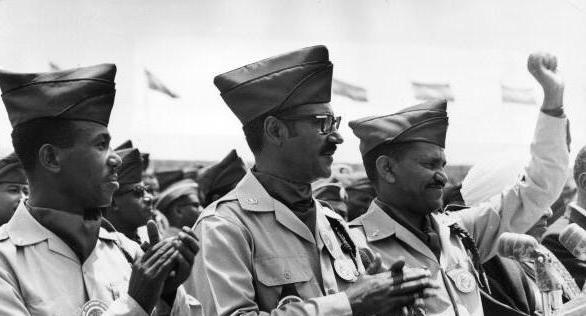

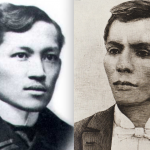
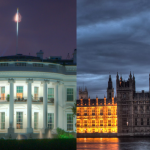

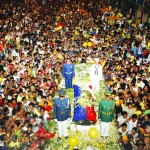
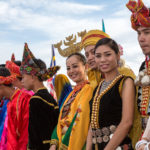


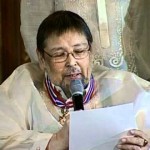
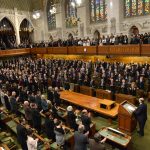



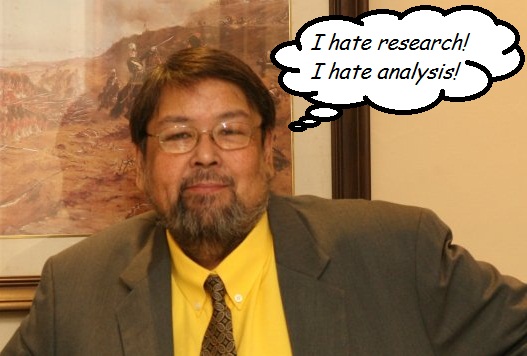
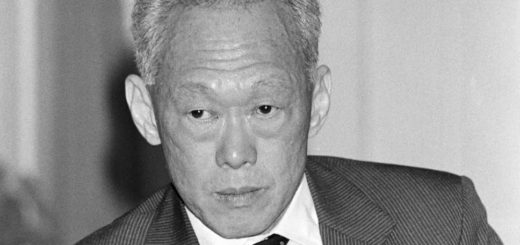
 I believe: This is a CoRRECT™ Video with a very positive message
I believe: This is a CoRRECT™ Video with a very positive message Walang Natira: Gloc-9's MTV Rap about the OFW Phenomenon
Walang Natira: Gloc-9's MTV Rap about the OFW Phenomenon